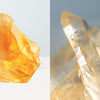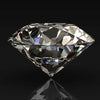
1/4 CTW Meaning: Understanding Diamond Carat Total Weight
When you come across the term "1/4 cttw" in the context of jewelry, it's a reference to diamonds and relates to the total carat weight of all the stones combined. Carat total weight, denoted as cttw, is a standard unit of mass for diamonds and is crucial in the valuation of diamond jewelry. One carat is equal to 200 milligrams, but when pieces have multiple stones, the cttw denotes the mass of all the stones together, not just a single diamond.
Style More, Spend Less – Explore Diamond Jewelry Deals!
Understanding 1/4 cttw is important when you are evaluating or purchasing diamond jewelry. It means that the total weight of all diamonds or gemstones used in a piece is one-quarter of a carat. For items such as rings with multiple stones, the cttw might be a blend of larger and smaller diamonds adding up to this weight. A 1/4 cttw piece offers a balance of noticeable sparkle without the heftier price tag of larger carat total weights.
Understanding Carat Total Weight
When exploring the world of diamonds and fine jewelry, you'll frequently encounter the term "carat total weight," an essential concept that determines the value and appearance of diamond pieces. This section provides a detailed look at what carat total weight means and how it's used.
Definition of Carat
Carat refers to a unit of measurement that is used to express the weight of diamonds and other precious gemstones. One carat is equivalent to 200 milligrams, or 0.2 grams. It's important to differentiate between 'carat,' which measures weight, and 'karat,' which measures the purity of gold.
Abbreviation of Carat Total Weight
The abbreviation CTTW, also sometimes denoted as CTW, stands for "Carat Total Weight" or "Carat Total Weight." This measurement combines the total mass of all the stones in a piece of jewelry. For instance, if a ring has several diamonds, the CTTW would be the sum of the weight of every diamond in the ring.
Unit of Measurement
Carat total weight is a standard unit of measurement in the diamond industry. Below is a brief reference:
- 1/4 CTTW: Indicates a quarter of a carat total weight, or 0.25 carats
- 1 Carat: 200 milligrams, or 0.2 grams
- Metric Carats: Sometimes used interchangeably with carats, but always referencing the same 200-milligram unit
When you see a piece marked with 1/4 CTTW, it means the combined weight of the gems totals one quarter of a carat. Notably, this does not imply that each gem weighs 0.25 carats; rather, it is the cumulative weight that matters. Carat total weight gives you a consolidated idea of the overall weight contributing to the design's impact and value.
Analyzing 1/4 Cttw in Jewelry

When you come across the term "1/4 cttw" associated with jewelry, it denotes the combined total carat weight of all diamonds or gemstones in a piece. This weight refers not to a single stone, but to the sum of all stones within the jewelry.
Common Jewelry Types with 1/4 Cttw
Typically, 1/4 cttw is found in jewelry pieces where multiple diamonds contribute to the total carat weight. Popular jewelry types that often feature 1/4 cttw include:
- Engagement Rings: A center stone may be flanked by accent diamonds to reach the total carat weight.
- Earrings: Earrings, especially studs or those with halo settings, might combine several smaller diamonds to achieve 1/4 cttw.
- Bracelets: Diamond bracelets can have several small diamonds that add up to the quarter carat total weight.
Impact on Value and Price
The value and price of 1/4 cttw jewelry are influenced by several factors:
- Diamond Quality: The four C's (Cut, Clarity, Color, and Carat) heavily impact the value, as higher quality accent stones can raise the overall price.
- Jewelry Setting: Intricate settings or precious metals can also contribute to a higher total price of the jewelry piece.
- Price Range: Typically, a diamond jewelry piece with a 1/4 cttw will be more affordable than one with a larger carat weight, making it a cost-effective option without compromising the visual appeal.
Size and Appearance Descriptions
-
Diamond Size: Each diamond in a 1/4 cttw piece is usually small, often less than 4mm in diameter.
-
Visual Impact: While individual stones might be modest in size, the combined sparkle can create a striking appearance.
- Size Comparison:Remember, while the term "1/4 cttw" helps you understand the total weight of diamonds in your jewelry, evaluating the quality and setting will provide a more comprehensive picture of the piece's overall value and aesthetic.
Diamond Quality in Relation to Carat Total Weight

| Diamond Quality | Description | Carat Total Weight Range |
|---|---|---|
| Exceptional | Exceptional quality diamonds with rare features and exceptional brilliance. | Varies, typically found in smaller to larger carat weights. |
| Excellent | Excellent quality diamonds with outstanding characteristics and high brilliance. | Varies, found across a broad range of carat weights. |
| Very Good | Very good quality diamonds with impressive characteristics and good brilliance. | Varies, found across a broad range of carat weights. |
| Good | Good quality diamonds with noticeable characteristics and satisfactory brilliance. | Varies, commonly found in smaller to mid-range carat weights. |
| Fair | Fair quality diamonds with visible characteristics and acceptable brilliance. | Varies, often found in smaller to mid-range carat weights. |
| Poor | Poor quality diamonds with significant visible characteristics and lower brilliance. | Varies, more commonly found in larger carat weights. |
When considering the purchase of a diamond, understanding how 1/4 cttw (carat total weight) affects quality is crucial. Your focus should be on the interplay between the 4Cs: cut, color, clarity, and carat weight, as these elements collectively define a diamond's value.
Role of Cut, Color, and Clarity
The cut of a diamond greatly influences its brilliance and visual appeal. A well-cut diamond will reflect light to maximize sparkle, regardless of its carat weight. For example, even a 1/4 cttw diamond can exhibit stunning brilliance if it has a high-quality cut.
Next, the color grading ranges from D (colorless) to Z (lightly colored). A 1/4 cttw diamond with a color grade closer to D will typically be of higher value, as it's rarer and more sought after for its lack of color.
Clarity refers to the absence of inclusions and blemishes. The fewer the imperfections, the higher the clarity grade, and consequently, the more exquisite and costly the diamond. Even at a 1/4 cttw, a diamond with a high clarity grade will maintain its quality and can command higher prices.
Evaluating Diamond Carat and Quality
Carat weight measures a diamond's apparent size, but it's the other 3Cs that determine its overall quality and brilliance. A larger carat weight doesn't always equate to a better diamond. It’s important to evaluate the 1/4 cttw in conjunction with the cut, color, and clarity to ensure you're getting a quality piece.
The carat total weight like 1/4 cttw describes the total weight of all diamonds in a piece of jewelry. When evaluating jewelry with multiple diamonds, remember that the individual diamond quality can vary, and high carat weight doesn't guarantee high-quality diamonds. Each of the individual stones should exhibit a favorable blend of the 4Cs to ensure the jewelry piece is collectively of high quality.
Consumer Considerations
When entering the market for 1/4 cttw jewelry, such as engagement rings or diamond necklaces, it's essential for you to be armed with knowledge about pricing, budgeting, and design options to ensure you're making a well-informed decision that aligns with your financial and aesthetic preferences.
Budgeting for 1/4 Cttw Jewelry
Setting a budget is the cornerstone of jewelry shopping. 1/4 cttw refers to the combined weight of diamonds totalling one quarter of a carat. With this specification, you can expect budget-friendly options compared to larger carat total weight pieces. Allocate a specific amount of money for the purchase to direct your search and avoid overspending. Remember, the total price includes more than just the diamonds it encompasses the metal and ring setting too.
Understanding Pricing Variations
Prices for 1/4 cttw diamond jewelry vary based on several factors, such as cut quality, color, clarity, and certification. For instance, a ring with diamonds high in clarity and color will generally command a higher price. Another considerable aspect is the brand; designer jewelry often comes with a premium, reflecting not just the physical product but the brand value as well.
- Cut Quality: Can impact the diamond's brilliance and value.
- Color: Near-colorless to colorless diamonds are priced higher.
- Clarity: Fewer inclusions mean a higher price tag.
- Certification: Diamonds graded by reputable labs can be more expensive.
Choosing the Right Metal and Design
The choice of metal can significantly affect the value and price of your jewelry. Popular metals include sterling silver, white gold, yellow gold, and platinumeach bringing its price point and style to the table. Your selection should complement the diamonds while considering durability and maintenance. Regarding design, simple ring settings tend to be less expensive than more intricate designs. Take time to compare the look and feel of various designs to find one that reflects your personal style and fits within your budget.
Jewelry Industry Insights

When you're exploring the jewelry market, understanding carat weight and knowing reputable retailers can significantly influence your purchasing decisions.
Renowned Retailers and Brands
In the world of fine jewelry, James Allen stands out as a notable online retailer, known for its high-quality diamond engagement rings. Their wide selection offers you transparency and detailed information, allowing you to assess the total carat weight (cttw) and individual diamond weight with ease.
Expert Perspectives on Carat Weight
Carat weight is a key metric used by gemologists to measure the mass of a diamond, where one carat equals 200 milligrams. When discussing 1/4 cttw, it denotes the combined carat weight of all diamonds in a piece, which could affect diamond prices. Expert gemologists consider both carat weight and total carat weight when assessing value and quality.
Frequently Asked Questions
When exploring diamond jewelry, understanding terminology is key to making informed decisions. Here, we address common inquiries related to '1/4 CTTW'.
What is the significance of the 'CTTW' designation in diamond jewelry?
'CTTW' stands for Carat (CT) Total Weight (TW), which represents the combined weight of all diamonds in a piece of jewelry. Specifically, 1/4 CTTW indicates the sum weight of the diamonds equals one-quarter of a carat.
How do you determine if a diamond labeled as '1/4 CTTW' is genuine?
To verify the authenticity of a 1/4 CTTW diamond, you should look for certification from reputable gemological institutions, such as the GIA or AGS, which assess and confirm diamond quality and authenticity.
What are the factors that affect the price of a 1/4 CTTW diamond?
The price of a 1/4 CTTW diamond is influenced by the four Cs: carat weight, cut, color, and clarity. Market demand and the presence of a certification can also affect pricing.
In what way does the 'CTTW' measurement impact the overall appearance of an engagement ring?
The 'CTTW' affects the ring's appearance by dictating the total diamond mass; however, individual stone size, setting, and style can drastically alter an engagement ring's visual impact.
For engagement rings, what does a 1/4 carat total weight signify in terms of size?
A 1/4 carat total weight in an engagement ring suggests a modest size, often used in designs featuring multiple smaller diamonds that collectively equate to a quarter of a carat.
How does a 1/4 CTTW diamond compare to other carat weights in terms of visibility and sparkle?
A 1/4 CTTW diamond may be less visible than larger carat weights, but if well-cut, it can still exhibit significant sparkle and visual appeal, especially when complemented by a harmonious setting.
Checkout some of our top collections:
Leave a comment
Please note, comments must be approved before they are published.










